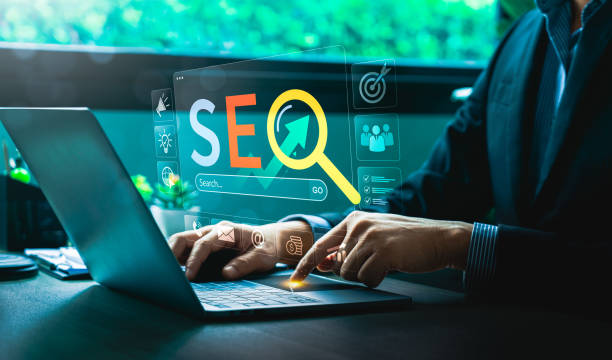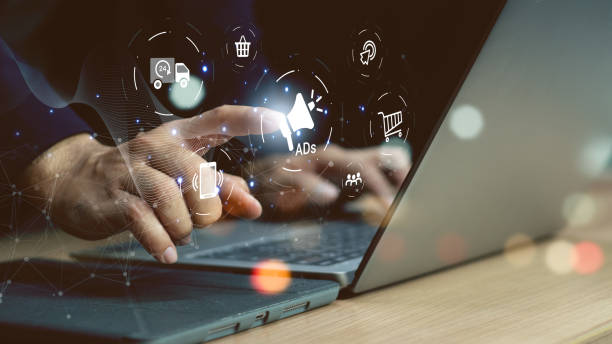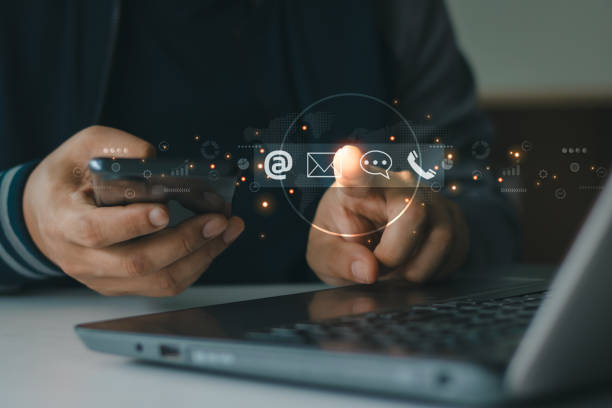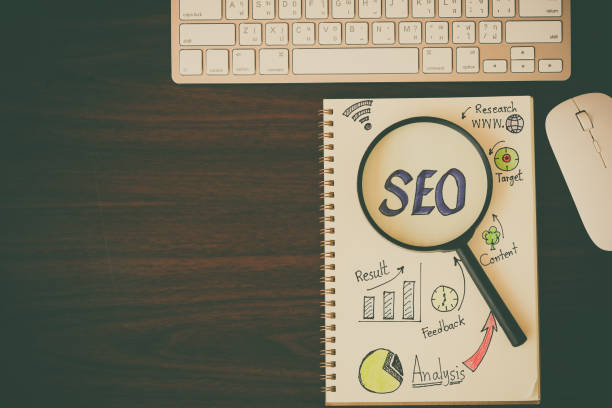What is Internal SEO? Definition, Importance, and Goals

Internal SEO (On-Page SEO) is a set of techniques and actions that you perform within your website to improve your site’s ranking in search engine results like Google.
Unlike External SEO (Off-Page SEO), which focuses on factors outside of the site, internal SEO gives you more control over optimizing your site.
The main goal of Internal SEO is to provide the best user experience for visitors and facilitate understanding of the site’s content by search engines.
The importance of Internal SEO stems from the fact that search engines seek to provide the most relevant and high-quality results to users.
By optimizing internal factors of the site, you help search engines better understand your content and show it to users who are looking for it.
The main goals of Internal SEO are:
- Increase site ranking in search results
- Increase organic (natural) traffic
- Improve user experience
- Increase Conversion Rate
To better understand Internal SEO, you need to be familiar with the concept of Search Engine Optimization (#SEO).
#SEO is the process that aims to improve the visibility of a website or a web page in the search results of a search engine.
The more visible your website is in search results, the more likely you are to attract potential customers to your business.
Internal SEO is one of the main pillars of SEO and plays an important role in the overall success of your SEO strategy.
Are you tired of losing business opportunities due to not having a professional corporate website?
Rasaweb helps you build a professional corporate website:
✅ Build a powerful and trustworthy image of your brand
✅ Convert website visitors into loyal customers
⚡ Get a free consultation now!
Keyword Research; The Cornerstone of Internal SEO
![]()
Keyword research is the first and most important step in Internal SEO.
Keywords are the terms that users use to search for information in search engines.
By identifying keywords related to your business and content, you can tailor your SEO strategy based on them.
The keyword research process includes the following steps:
- Brainstorming: Create a list of words and phrases that you think your audience would search for to find your products or services.
- Using Keyword Research Tools: Tools like Ahrefs, Moz Keyword Explorer, Ubersuggest and Google Keyword Planner help you find relevant keywords with high search volume and competition.
- Analyzing Competitors: Find out what keywords your competitors are using.
- Choosing the Right Keywords: Based on search volume, competition, and relevance to your business, choose your primary and secondary keywords.
After choosing your keywords, you should use them strategically in your content.
However, keep in mind that overuse of keywords (Keyword Stuffing) can damage your site’s ranking.
Your goal should be to create high-quality and valuable content that naturally includes your chosen keywords.
In fact, the goal of Internal SEO is to identify suitable and relevant keywords for the site.
Content Optimization; Creating Engaging and SEO-Friendly Content

Content is king! This phrase is very common in the SEO world and for good reason.
High-quality and valuable content not only attracts users but also helps search engines better understand the subject and purpose of your site.
To optimize content for Internal SEO, pay attention to the following:
- Create Unique and Original Content: Avoid copying content from others and create exclusive and valuable content.
- Use Keywords in Title, Meta Description, and Main Text: Use your keywords naturally and strategically in the title, meta description, and main text of your content.
- Optimize Images: Choose file names for images with relevant keywords and use Alt Text to describe the images.
- Use Headings and Subheadings: Use headings and subheadings (H1, H2, H3, …) to organize content and highlight important points.
- Optimize URL Structure: Make your page URLs short, descriptive, and include keywords.
- Internal Linking: Link different pages of your site to each other so that users and search engines can easily navigate your site.
Internal SEO means optimizing site content for search engines.
You should produce high-quality and user-friendly content.
| Features of SEO-Friendly Content | Descriptions |
|---|---|
| Unique and Original | Create exclusive and valuable content and avoid copying. |
| Use of Keywords | Use keywords naturally and strategically in the title, meta description, and main text. |
| Image Optimization | Choose file names for images with relevant keywords and use Alt Text. |
| Use of Headings | Use headings and subheadings to organize content and highlight important points. |
| URL Structure Optimization | Make your page URLs short, descriptive, and include keywords. |
Title and Meta Description Optimization; Attracting Clicks from Search Results

The Title Tag and Meta Description are two important HTML elements that are displayed in search results.
The title is the main title of your page, and the meta description is a short summary of the page’s content.
Optimizing these two elements can greatly impact your click-through rate (CTR) from search results.
To optimize the title and meta description, pay attention to the following:
- Title: The title should be short (maximum 60 characters), engaging, and include the main keyword of the page.
- Meta Description: The meta description should be an accurate and engaging summary of the page’s content and encourage the user to click.
The length of the meta description should be between 150 and 160 characters. - Use of Keywords: Use relevant keywords naturally in the title and meta description.
- Avoid Repetition: Avoid repeating the title and meta description on different pages of your site.
Each page should have its own unique title and meta description.
In fact, Internal SEO includes optimizing meta descriptions to attract the audience.
Does your company website create a professional and lasting first impression on potential customers? Rasaweb, with its professional corporate website design, not only represents the credibility of your brand but also opens a path for the growth of your business.
✅ Creating a powerful and trustworthy brand image
✅ Attracting target customers and increasing sales
⚡ Get a free consultation
URL Structure Optimization; Creating SEO-Friendly URLs

The URL structure of your site plays an important role in SEO and user experience.
SEO-friendly URLs are short, descriptive, and include relevant keywords.
To optimize the URL structure, pay attention to the following:
- Shortness: Short URLs are more readable and memorable.
- Descriptiveness: The URL should accurately describe the content of the page.
- Use of Keywords: Use relevant keywords in the URL.
- Use of Hyphens (-): Use hyphens to separate words in the URL.
- Avoidance of Special Characters: Avoid using special and unnecessary characters in your URL.
- Stability: Do not change the URL of a page after it is published.
Changing the URL can cause you to lose ranking and traffic.
Optimizing the URL helps with Internal SEO of the site.
Image Optimization; Reducing Size and Using Alt Text

Images play an important role in the attractiveness and user experience of your site.
However, large and unoptimized images can slow down your site’s loading speed and negatively impact SEO.
To optimize images, pay attention to the following:
- Reduce Image Size: Minimize the size of images without compromising quality.
Use image compression tools like TinyPNG or ImageOptim. - Choose the Right Format: Use the right formats for images.
JPEG format is suitable for photos and PNG format is suitable for images with graphics and text. - Use Alt Text: Use Alt Text to describe images.
Alt Text helps search engines understand the content of images and is displayed to the user if the image fails to load. - Proper File Name: Choose file names for images with relevant keywords.
- Use of CDN: Use Content Delivery Networks (CDNs) to load images faster.
Image optimization greatly helps with Internal SEO.
Site Speed Optimization; Providing an Exceptional User Experience

Site loading speed is one of the important ranking factors in Google.
Users expect sites to load quickly, and if the site is slow, they are likely to leave it.
To optimize site speed, pay attention to the following:
- Image Optimization: Large and unoptimized images slow down the site’s loading speed.
- Enable Gzip Compression: Gzip compression reduces the size of your site’s files and increases loading speed.
- Use Caching: Caching stores your site’s information and loads the site faster on subsequent visits.
- Reduce HTTP Requests: The fewer HTTP requests your site makes, the faster the site will load.
- Use of CDN: Content Delivery Networks (CDNs) store your site’s content on different servers around the world and choose the closest server to users to load the site.
- Choose Suitable Hosting: Choose a reputable hosting company with high-speed servers.
Internal SEO can help improve the site’s user experience by optimizing the site’s speed.
| Factor Affecting Site Speed | Descriptions |
|---|---|
| Image Optimization | Reducing size and using the appropriate format and Alt Text. |
| Gzip Compression | Reducing the size of site files. |
| Caching | Storing site information for faster loading. |
| Reducing HTTP Requests | Reducing the number of requests sent to the server. |
| Use of CDN | Distributing content on different servers for faster loading. |
Responsive Design; Optimization for Mobile Devices

Given the increasing use of mobile devices to search the internet, responsive design is essential for SEO.
Responsive design means that your site automatically adapts to the screen size of different devices (mobile, tablet, desktop).
Google gives a better ranking to sites that have responsive design.
To make sure your site is responsive, use the Google Mobile-Friendly Test tool.
This tool shows you how your site appears on mobile devices and what problems it has.
In the discussion of Internal SEO, it should be noted that the site design should be responsive.
Are you losing business opportunities because of an outdated website? With Rasaweb, solve the problem of not attracting potential customers through the website forever!
✅ Attracting more high-quality leads
✅ Increasing brand credibility in the eyes of customers
⚡ Get a free corporate website design consultation
Internal Linking; Creating a Connection Between Site Pages

Internal Linking means linking different pages of your site to each other.
Internal linking helps users and search engines easily navigate your site and find the information they need.
Internal linking can also help improve the ranking of important pages on your site.
For effective internal linking, pay attention to the following:
- Linking to Related Pages: Link related pages to each other.
- Using Appropriate Anchor Text: Use descriptive anchor text that includes relevant keywords.
- Avoid Over-Linking: Avoid over-linking to one page.
- Linking to Important Pages: Link to important pages of your site to improve their ranking.
Internal linking is a fundamental pillar of Internal SEO of the site.
Internal SEO Review and Analysis; Measurement and Continuous Improvement

Internal SEO is a continuous process and needs review and analysis.
To measure and continuously improve the internal SEO of your site, use tools like Google Search Console and Google Analytics.
These tools provide you with information about site traffic, keywords, page rankings, and other important SEO factors.
By reviewing and analyzing this information, you can identify the strengths and weaknesses of your site’s internal SEO and take action to improve it.
For example, if you find that a particular page has little traffic, you can optimize its title, meta description, and content.
Or, if you find that your site’s loading speed is slow, you can optimize images and use caching.
Internal SEO reaches the highest ranking in Google with constant optimization and trial and error.
Frequently Asked Questions
| Question | Answer |
|---|---|
| What is Internal SEO (On-page SEO)? | Internal SEO refers to a set of actions that are performed inside a website and on the content of pages to achieve a better ranking in search results. |
| Why is internal SEO important for a website? | Internal SEO helps search engines better understand the content of your page and assess its importance. It also provides a better user experience for visitors. |
| What are the most important factors of internal SEO? | The most important factors include keyword optimization, content quality, Title Tag, Meta Description, URL structure, Heading tags (H1-H6), internal linking, and image optimization. |
| What role does the Title Tag play in internal SEO? | The title tag is one of the most important factors of internal SEO that displays the title of your page in search results and the browser tab. It should include the main keyword and be engaging. |
| What is the importance of Meta Description in internal SEO? | The meta description provides a summary of the content of the page, and although it does not directly affect ranking, it can increase the click-through rate (CTR) by encouraging users to click. |
| How is a keyword used in internal SEO? | Keywords are the terms that users use to search for information in search engines. The proper and natural use of them in the content helps the search engine to recognize the subject of the page. |
| What is internal linking and what is its benefit in internal SEO? | Internal linking means creating links between different pages of a website. This helps to distribute the credibility of pages, help search engine robots crawl, and improve user experience. |
| How does image optimization affect internal SEO? | Image optimization includes compressing the size, using appropriate Alt tags, and properly naming files. This improves the page loading speed and helps search engines understand the content of the image. |
| What does high-quality content mean in internal SEO? | High-quality content means content that is comprehensive, accurate, unique, up-to-date, and user-friendly and meets the needs of users. |
| What role does URL structure play in internal SEO? | Readable, short URLs that include the main keyword help search engines and users have a better understanding of the page content and improve user experience. |
And other services of Rasa Web advertising agency in the field of advertising
Smart sales automation: A creative platform for improving customer acquisition with custom programming.
Intelligent data analysis: A fast and efficient solution to increase sales by focusing on attractive user interface design.
Smart digital advertising: A fast and efficient solution for managing campaigns with a focus on marketing automation.
Smart marketing automation: An exclusive service for growing digital branding based on optimizing key pages.
Smart advertising campaign: An exclusive service for improving SEO ranking based on precise audience targeting.
And more than hundreds of other services in the field of internet advertising, advertising consulting and organizational solutions
Internet advertising | Advertising strategy | Advertisement report
Resources
What is SEO and how can you learn SEO in 2024?
, What is On-Page SEO? Comprehensive On-Page SEO Guide
,What is Internal SEO or On-Page SEO? Comprehensive Internal SEO Guide | Faraz SEO
? Are you ready to jumpstart your business in the digital world? Experience a bright future with Rasaweb Afrin Digital Marketing Agency, specializing in secure website design and comprehensive online marketing strategies.
📍 Tehran, Mirdamad Street, next to Central Bank, South Kazerun Alley, Ramin Alley, No. 6



